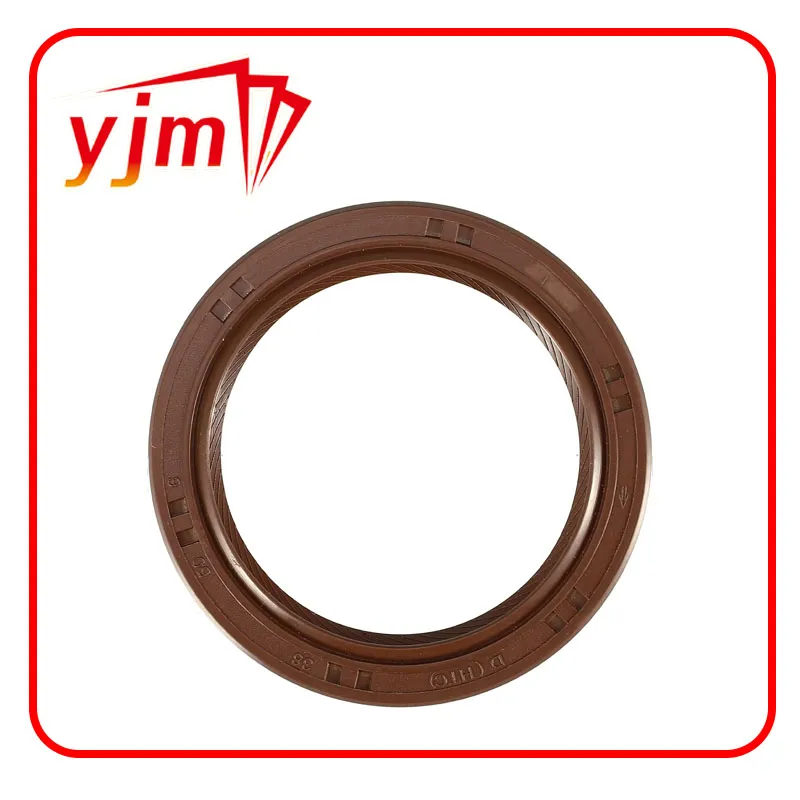automobile oil seal
Understanding the Importance of Automobile Oil Seals
When it comes to the intricate mechanics of an automobile, several components work in unison to ensure smooth operation and longevity. Among these crucial components are oil seals, also known as oil or grease seals. While these simple-looking parts might not be the first thing that comes to mind when discussing engine performance or maintenance, they play an essential role in the efficiency and durability of a vehicle.
What are Oil Seals?
Oil seals are typically made from rubber, neoprene, or other synthetic materials, and they function to prevent the leakage of lubricants, oil, or grease, while also keeping contaminants such as dirt and dust from entering sensitive areas of the machinery. They are strategically placed at various points in the automobile, including the engine, transmission, and differential, where they help maintain pressure and retain fluids essential for lubrication.
How Do Oil Seals Work?
The primary function of an oil seal is to create a barrier that prevents the escape of fluids. They feature a unique design that includes a sealing lip, which makes direct contact with a rotating shaft. When installed properly, the oil seal compresses against the shaft surface as it rotates. This compression creates a tight seal that minimizes friction and wear, thus ensuring that the oil remains contained within the system.
Oil seals are also designed to withstand various operational challenges. This includes exposure to temperature fluctuations, pressure variations, and chemical interactions with the oils and lubricants they are designed to contain. As such, selecting the right oil seal for a specific application is crucial to vehicle performance.
Importance of Oil Seals in Automobile Maintenance
The importance of oil seals cannot be overstated in the realm of automobile maintenance. Leaking oil or fuel can lead to significant damage to the engine or transmission if not addressed promptly. Oil seals act as the first line of defense against leaks, and their failure can result in various issues, including
automobile oil seal

1. Decreased Engine Performance Loss of lubricant due to a faulty oil seal can lead to increased friction between moving parts, resulting in diminished engine performance and efficiency. 2. Contamination Inadequate sealing can allow dirt, dust, and other contaminants to enter the engine or transmission, potentially leading to severe wear and tear of crucial components.
3. Environmental Hazards Oil leaks contribute to environmental pollution. A malfunctioning oil seal can result in the leakage of oil onto roadways or into water sources, posing hazards to wildlife and natural ecosystems.
Signs of a Failing Oil Seal
It is essential for vehicle owners to recognize the signs of a failing oil seal. Some common indicators include
- Oil Spots Puddles or spots of oil under the vehicle can indicate that an oil seal is compromised. - Low Oil Levels A noticeable drop in oil levels can signal a leak and should be checked immediately. - Engine Performance Issues Strange noises, decreased performance, or overheating can also be linked to bad oil seals.
Maintaining Your Oil Seals
To prolong the life of oil seals, regular vehicle maintenance is key. This includes routine inspections, keeping up with oil changes, and ensuring that the engine and transmission are operating under safe temperature and pressure levels. If an oil seal does fail, it is crucial to replace it as soon as possible to avoid further damage and costly repairs.
Conclusion
In conclusion, automobile oil seals might seem like minor components within the greater mechanics of a vehicle, but they play a pivotal role in ensuring reliability and efficiency. By preventing leaks and contaminants, oil seals protect critical engine parts, thereby extending vehicle life. Regular maintenance and timely replacements can save vehicle owners from frustrating and expensive repair bills down the road. Recognizing the value of these small yet mighty parts is essential for anyone looking to keep their vehicle in optimal condition.
-
The Ultimate Guide to Boat Propeller Bearings and Trailer Wheel Bearings
News Jul.31,2025
-
The Essential Guide to Marine Bearings and Boat Trailer Wheel Bearings
News Jul.31,2025
-
The Complete Guide to Heavy Duty Seals: Protecting Doors and Spaces Efficiently
News Jul.31,2025
-
Essential Guide to Marine Shaft Bearings and Boat Trailer Axle Bearings
News Jul.31,2025
-
Comprehensive Guide to Marine and Trailer Bearings for Safe Boating and Transport
News Jul.31,2025
-
Comprehensive Guide to Automotive Oil Seals: Protecting Your Engine and Shafts
News Jul.31,2025
-
Understanding Automotive Oil Seals: Essential Components for Engine and Shaft Protection
News Jul.30,2025
Products categories















